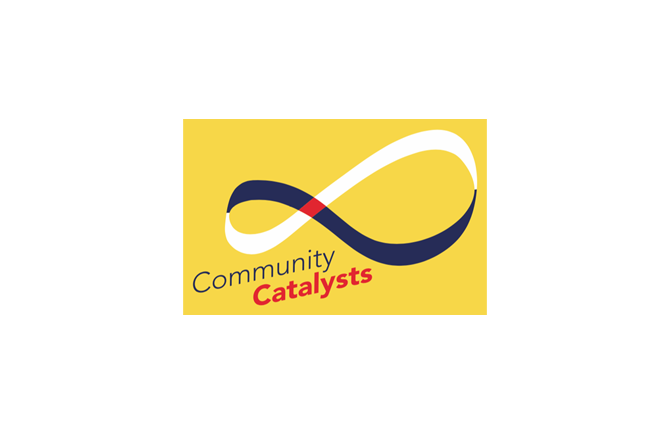WeLand - Making Sense of Place
When we become disconnected from nature and from each other, we shape fragmented places that offer us neither the belonging we crave for, nor the regenerative livelihood that emerges from belonging - the transformation of place the Earth so desperately craves for.
WeLand - Making Sense of Place* is a regenerative design thinking process based on the understanding that communities grow integrity through making sense of place. It aims to cultivate and act out of awareness of natural patterns through holistic engagement that listens deeply to the voices of human and other-than-human actors in the landscape.
It is a dynamic process grounded in a universal natural pattern - the torus - that invites communities to co-create regenerative livelihoods through engagement in flexible practices. Any member of a community can activate WeLand.
* Originally created at Schumacher College by Amy Seefeldt, Ana Sequeira and Hugo Oliveira; further developed by the Community Catalysts consortium as an Open Source / Creative Commons Toolkit
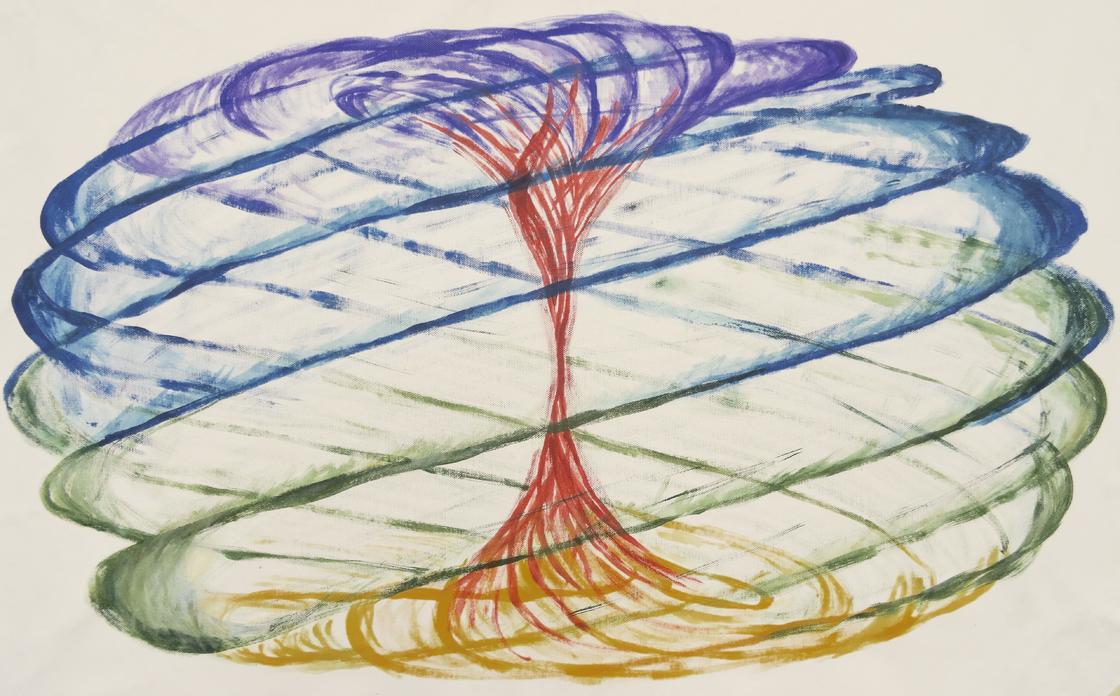
WeLand is a five phase cycle, flowing through making sense of place into regenerative livelihoods. It moves from a holistic connection with the landscape in a wide sensorial diagnosis, aiming for deep engagement between the community, the land and each other. This creates a confluence of understanding which names the identity of a place. Emerging from the naming phase, key actors re-engage the community in co-designing their future. Ideas crystallize and are tested. New information is gathered and collated as interaction with landscape deepens, thus refining identity through a continuous iterative process. WeLand can happen simultaneously at a variety of scales and through multiple interacting projects.
WeLand Phases:
The design process happens in a vortex movement along 5 phases of inquiry:
LANDSCAPE INTEGRITY To understand landscape as it is perceived
CO-SENSING Understand the presence of who is part of the landscape
IDENTITY NAMING Identify what is willing to emerge from the relationship between what we are and what we may become
CO-DESIGN Co-create strategies for landscape and community regeneration
REGENERATIVE LIVELIHOODS Implement desired actions

Two other phases support the process and happen in the beginning of the process, before entering the vortex and in the end of the design process, when coming out of the vortex:
CREATING THE SOIL Choose tools to build a common ground for collaboration
BACK TO THE SOIL Evaluate and integrate the learnings of the cycle
Guiding Principles:
- There are no fixed tools, only flexible suggestions.
- Structure emerges from understanding, not imposition.
- A balance of approaches and voices yields clarity.
- Authentic engagement generates momentum.
- Ego blocks the flow. Love makes it grow.
- Every end is a beginning. Celebration marks completion with joy.
Desirable Qualities of Activators:
- Deep listening
- Close observation
- Warm facilitation
- Non-judgement
- Non-attachment to one's own way
- Attending to relationships
- Synthesizing patterns
Online x Printed Toolkit
This toolkit works on-line and printed, combining strengths of both formats. On the online version, practice cards contain additional information, links, attachments and opportunities for interactions based on specific tools that can only be facilitated online. The printable version, able to be generated through the platform, has the essential information about the practice and a QRcode to connect with the digital version of the card. The aim of the printed version is to serve presential group dynamics where printed materials facilitate the engagement and thinking specially about reaching anybody, including Catalysts with no internet-connection or even electricity.
TOOLKIT COMPONENTS
WeBoard
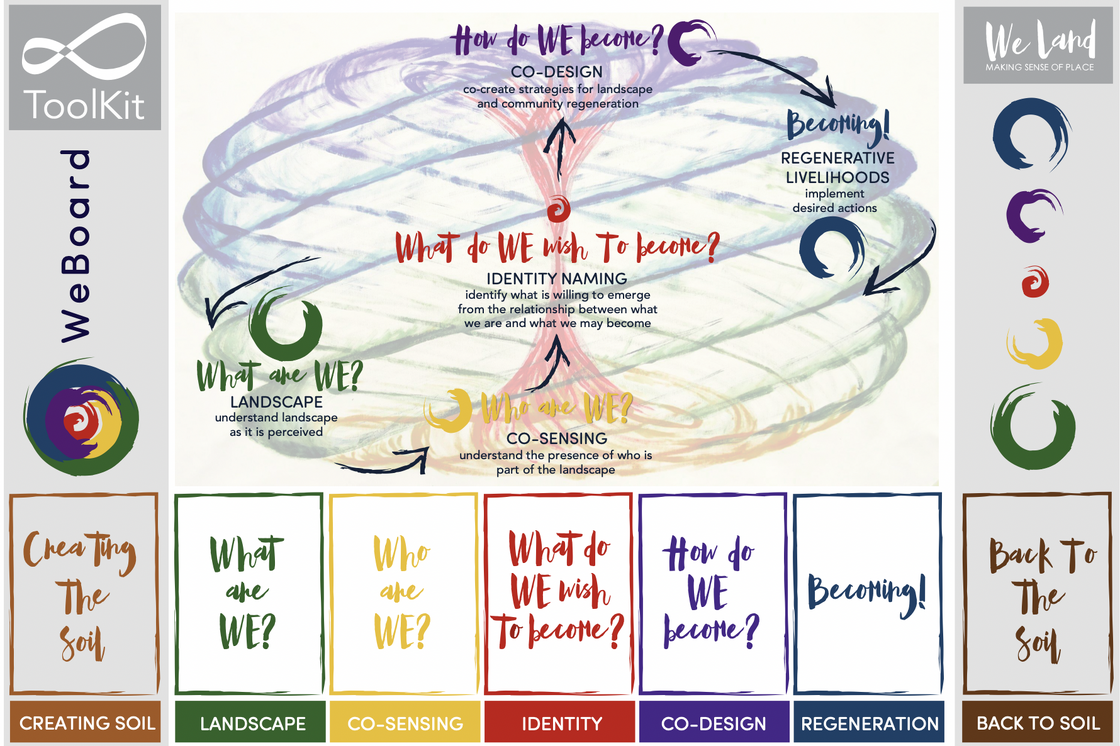
Canvas to:
- Visualise the WeLand Phases within a cycle
- Keep track of the design flow
- Place the selected WePractice Cards
Suggested printing size: A2
WeMeta Cards
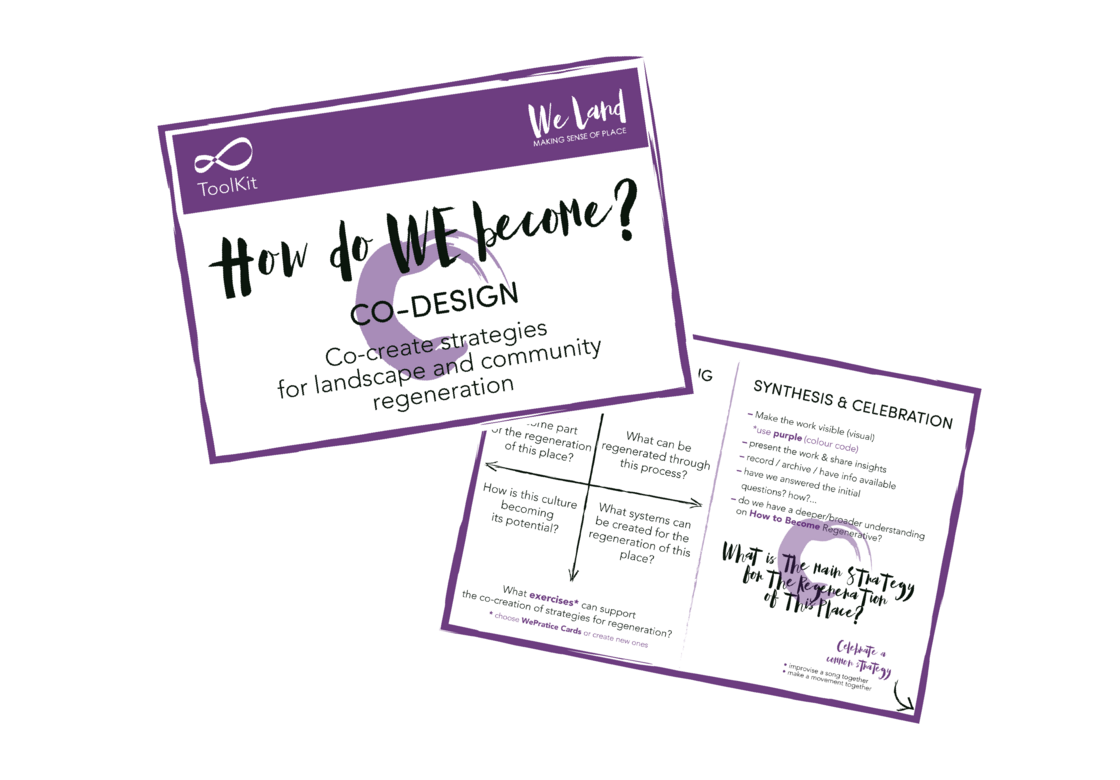
A Card for each phase that:
- Introduce a phase
- Harvest collective findings
- Synthesise and celebrate
Suggested printing size: A3
WePractice Cards
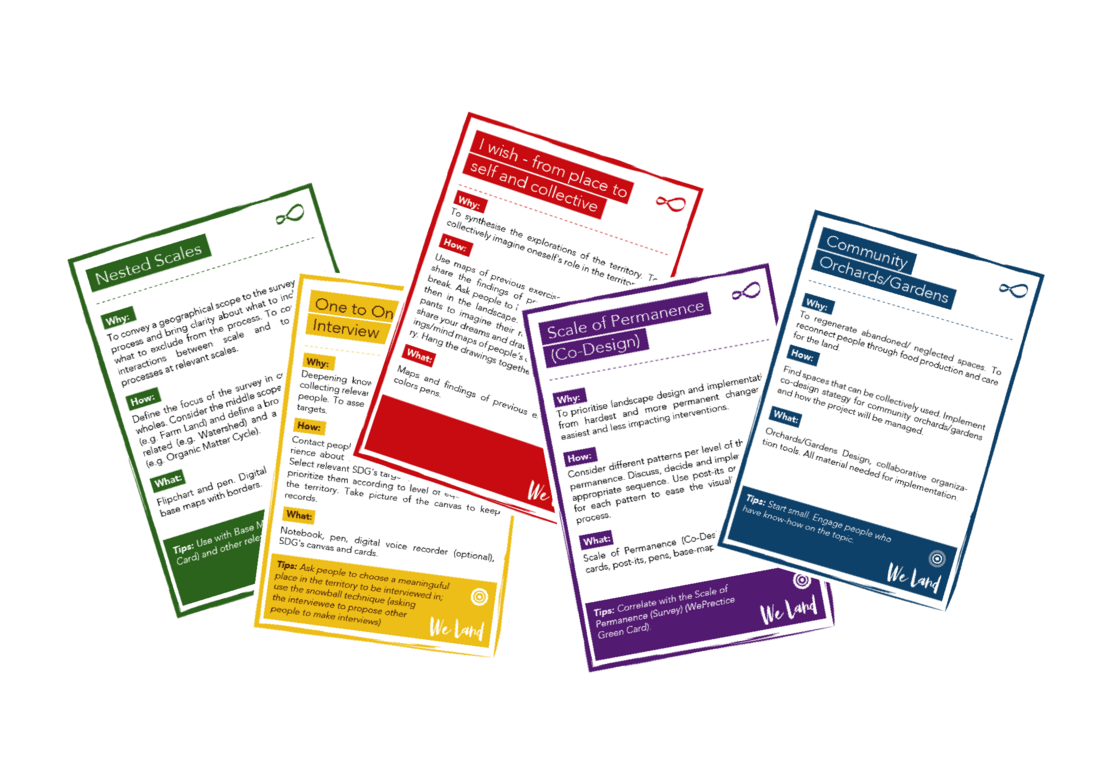
- Select practices that are relevant along phases, prioritize them and distribute exercises if needed
Suggested printing size: A6
Navigate with the help of tags
The toolkit contains numerous tools for every phase of the “WeLand - Making Sense of Place” cycle. As mentioned before, some of them can be used in several contexts, formats, some of them can be used in a specific setting or context. The goal is to provide the best collection of tools for every user to their specific needs, circumstances, timespan, local reality, etc. For this reason the toolkit has a tag system which can be used to focus on those tools that are useful and appropriate for your work. To generate your own unique selection with the set of tools you intend to use in a specific phase, you can filter the tools based on different aspects of the activity, choosing which characteristics you want to include in your filtering to reach the final set of cards that make sense for you, your work, your community.
Do your own TOOLBOX
You are invited to explore the toolkit cards throughout the phases of the WeLand - Making Sense of Place. The toolkit contains an ever growing collection of practice cards that can be used in several settings and contexts for several purposes. You can download the whole toolkit or you can choose to download only those cards that are relevant to you and your community. We recommend selecting those practices that make more sense to you and create your own toolbox. You can even create distinct toolboxes according to different processes. When you download your selection, you will be able to print the cards, cut them and use them with your target group.
It will save you time and resources if you only download the cards you will use and not the whole toolkit with cards that probably will not be needed. The process of generating your own toolbox is similar to using a webshop: you select your items and they are placed in your shopping cart. Here the cart itself is your unique toolkit which can be downloaded in PDF format and printed for offline use.
